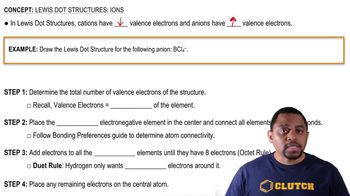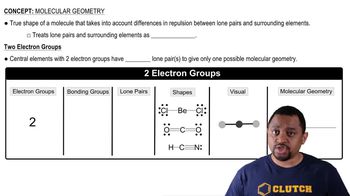Multiple Choice
Determine the bond angle for the following compound:BeCl2.
 Verified step by step guidance
Verified step by step guidance Verified video answer for a similar problem:
Verified video answer for a similar problem:



 1:24m
1:24mMaster Bond Angles (Simplified) Concept 1 with a bite sized video explanation from Jules
Start learning